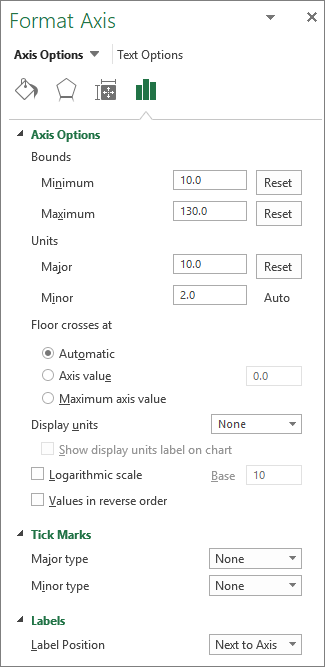
- #How do you move vertical axis using hot keys in word how to#
- #How do you move vertical axis using hot keys in word series#
I added data labels to the XY series, shown in orange to distinguish them from the black axis labels (top right chart below). The 0.5 values in column G make the points line up with the vertical axis of the chart. I formatted the XY series, and changed the axis to Primary (top left chart below).
#How do you move vertical axis using hot keys in word series#
The XY scatter series is on the secondary axis, also not too useful. I right-clicked the added series, picked Change Series Chart Type from the pop-up menu, and changed just this series to an XY scatter type (bottom right chart). This has added another set of columns (bottom left chart), not so useful.

I selected and copied the green shaded range in the second data range, selected the chart, and used Paste Special to add the data to the chart, using the settings shown in the dialog overlying the top right chart. I made a column chart (don't know what type of chart you want, but this technique is widely applicable) using the yellow shaded range in the first data range (top left chart). You can use a lookup formula for this, for example, the formula in D2 is: I inserted a column "Value" (blue text) in your data range that has the Y value corresponding to the label in your "Data" column. Keep in mind that that you don't have reverse the axis in a case like this.įor example, to get the same result with a bar chart I could simply sort the source data, smallest to largest.I started with your data, and I added a small lookup table.

To reset the axis to it's default, visit axis options again and set the axis crossing to automatic, and untick the reverse order checkbox. Now, if I switch back to a column chart, the reversed axis comes along too. To fix this problem, you'll want to set the horizontal axis to cross at the maximum value. So when I reverse the order, the axis moves along with Cuba. This is confusing, but the gist is that the horizontal axis is set to cross at the minimum or first value by default, which is Cuba in this case. Notice it also moves the horizontal axis to the right. When I check the box, Excel reverses the plot order. There, near the bottom, you'll see a checkbox called "values in reverse order". To make this change, right-click and open up axis options in the Format Task pane. Luckily, Excel includes controls for quickly switching the order of axis values. It's the layout of the bar chart that makes it look like the data is reversed, since the values are plotted from the bottom to the top. The first value is plotted next to the origin, and subsequent values move away from the origin. Now, what happens if I change this chart to a bar chart?Īt first you might think that Excel changed the sort order of the axis labels.īut, if you look closely, the order is the same. The main thing to understand here is that the category labels start next to the origin, and each new value is plotted further away from the origin. In this case, the first column is Cuba, and the last is Barbados, so the columns match the order of the source data moving moving top to bottom.Ī line chart and area chart don't make sense for this data, but if I temporarily try them out, you can see the plot order stays the same. When Excel plots data in a column chart, the labels run from left to right to left. Let me insert a standard column chart and let's look at how Excel plots the data.

Here we have data for the top 10 islands in the Caribbean by population.
#How do you move vertical axis using hot keys in word how to#
In this video, we'll look at how to reverse the order of a chart axis.


 0 kommentar(er)
0 kommentar(er)
